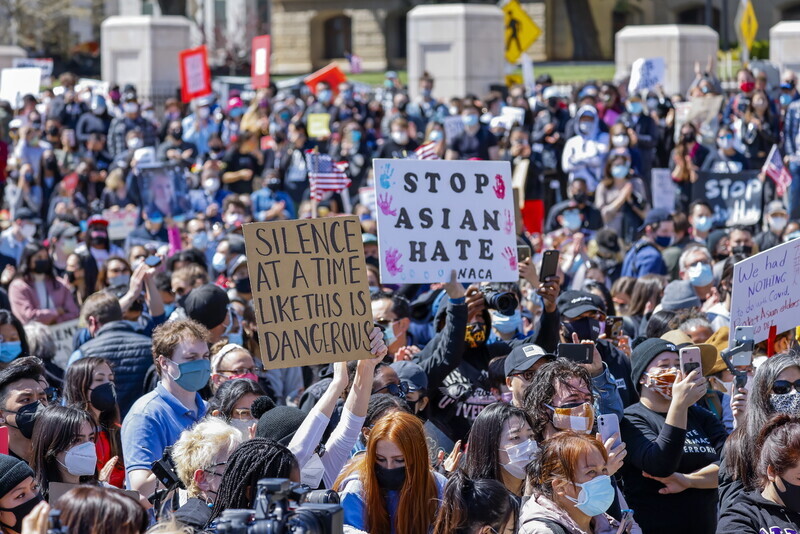hankyoreh
Links to other country sites 다른 나라 사이트 링크
[Column] What is race?

“The number of purely white people in the world is [proportionally] very small. [. . .] In Europe, the Spaniards, Italians, French, Russians, and Swedes are generally of what we call a swarthy complexion; as are the Germans also, the Saxons only excepted, who with the English, make the principal body of white people on the face of the earth.”
This passage appears in “Observations Concerning the Increase of Mankind, Peopling of Countries, etc.,” written by American thinker Benjamin Franklin in 1751.
After moving to the UK in 2007, my perspective on race started to become quite different from what it had been when I lived in the US.
While playing with my young children in London parks, I observed the people around me and found that many didn’t fit into the neat categories of white, Black, and Asian that are so common in the US.
This was when I palpably felt the continuous spectrum of physical characteristics. In terms of skin color, there was an exceedingly diverse range of tones between what can be regarded as the two extremes of white and black. I would guess this is because the populations of the continents of Eurasia and Africa are rather evenly mixed.
London is a veritable melting pot of not only whites, Blacks, and Asians, but also people from the Middle East, South Asia, Europe — including Central Europe, the Mediterranean, and the Balkans — and all corners of the former Soviet Union.
Since the 20th century, scientists have approached biological categorization from two complementary perspectives. There’s categorization based on genotype, which only accounts for genetic elements, and categorization based on phenotype, which only considers the external characteristics that take shape in an organism’s birth and growth.
To be sure, the phenomenon we perceive in our everyday lives is the biological phenotype. According to biological categories, all humans are the same species, but it’s possible to ask how meaningful racial categorization is inside the species, whether that categorization is based on genotype or phenotype.
In England, the word “race” began to be used somewhat indeterminately in the 16th century until it gradually became established as a biological concept during the expansion of the British Empire in the 17th-19th centuries. Around that time, people started regarding the differences between Native Americans, Africans, and Europeans as scientific categories.
It hardly needs to be said that the formation of this concept was influenced by political spheres and social prejudices. The result was that specific groups were either categorized as white or non-white depending on the mood of the time. Benjamin Franklin himself wanted to exclude European peoples whom he regarded as inferior, such as the Germans, from the ranks of white people.
One precaution that should be taken when asking whether race exists is how exactly we interpret that question. Some people mistakenly assume that variations in phenotype or genotype are themselves racial differences. That means jumping from the commonplace observation of considerable differences between Koreans and Englishmen to the conclusion that those represent racial categories.
But strictly speaking, race is a mathematical concept that can only be understood through statistical groups. In other words, the key question is whether there are “natural boundaries” between various groups of human beings when they’re brought together.
People divide Seoul into Gangbuk and Gangnam because of the natural boundary of the Han River, which separates the city into northern (“buk”) and southern (“nam”) halves. But the boundary between the separate administrative regions of Seoul and Gyeonggi Province is more complicated: partly historical, partly arbitrary, and partly just a matter of convenience. And when we expand to Gangwon Province and Korea as a whole, the distinction between Gangbuk and Gangnam naturally disappears.
If we are to discuss the concept of race precisely, we need to compile measurable data about human types to determine how many groups there are.
The Human Genome Project, which ran from 1990 to 2003, completely mapped the base pairs that constitute human DNA. That has enabled comparisons of data about various humans from the perspective of the genotype.
There’s been a heated debate about whether race exists on the level of human genetics; at the moment, scientists are leaning toward the conclusion that it doesn’t.
The mainstream opinion is that the distribution of various genes and measurable external characteristics constitutes a big mass of humanity that precludes the formation of racial groups.
Of course, there are still scholars who strongly assert the significance of race. But even they include people from North Africa, the Middle East, and North India in the category of “statistical whites” and acknowledge that drawing a racial boundary around Europe is impossible.
Given the frequent discussion of issues related to immigration today, the concept of race continues to function as a major element in social conflict.
For instance, an important factor in the complex dispute between Israel and Palestine is that one side has a strong European identity.
Given the interaction of civilizations throughout history, it’s impossible to divide the Mediterranean cultural sphere into Europe, Asia, and Africa. There needs to be broader awareness that racial categorization is even more ambiguous.

By Kim Min-hyong, professor of math at the University of Warwick
Please direct comments or questions to [english@hani.co.kr]

Editorial・opinion
![[Editorial] Yoon must halt procurement of SM-3 interceptor missiles [Editorial] Yoon must halt procurement of SM-3 interceptor missiles](https://flexible.img.hani.co.kr/flexible/normal/500/300/imgdb/child/2024/0501/17145495551605_1717145495195344.jpg) [Editorial] Yoon must halt procurement of SM-3 interceptor missiles
[Editorial] Yoon must halt procurement of SM-3 interceptor missiles![[Guest essay] Maybe Korea’s rapid population decline is an opportunity, not a crisis [Guest essay] Maybe Korea’s rapid population decline is an opportunity, not a crisis](https://flexible.img.hani.co.kr/flexible/normal/500/300/imgdb/original/2024/0430/9417144634983596.jpg) [Guest essay] Maybe Korea’s rapid population decline is an opportunity, not a crisis
[Guest essay] Maybe Korea’s rapid population decline is an opportunity, not a crisis- [Column] Can Yoon steer diplomacy with Russia, China back on track?
- [Column] Season 2 of special prosecutor probe may be coming to Korea soon
- [Column] Park Geun-hye déjà vu in Yoon Suk-yeol
- [Editorial] New weight of N. Korea’s nuclear threats makes dialogue all the more urgent
- [Guest essay] The real reason Korea’s new right wants to dub Rhee a founding father
- [Column] ‘Choson’: Is it time we start referring to N. Korea in its own terms?
- [Editorial] Japan’s rewriting of history with Korea has gone too far
- [Column] The president’s questionable capacity for dialogue
Most viewed articles
- 1Months and months of overdue wages are pushing migrant workers in Korea into debt
- 2At heart of West’s handwringing over Chinese ‘overcapacity,’ a battle to lead key future industries
- 3[Editorial] Yoon must halt procurement of SM-3 interceptor missiles
- 4Fruitless Yoon-Lee summit inflames partisan tensions in Korea
- 5Trump asks why US would defend Korea, hints at hiking Seoul’s defense cost burden
- 6Dermatology, plastic surgery drove record medical tourism to Korea in 2023
- 71 in 3 S. Korean security experts support nuclear armament, CSIS finds
- 8[Editorial] New weight of N. Korea’s nuclear threats makes dialogue all the more urgent
- 9South Korea officially an aged society just 17 years after becoming aging society
- 10[Column] For K-pop idols, is all love forbidden love?